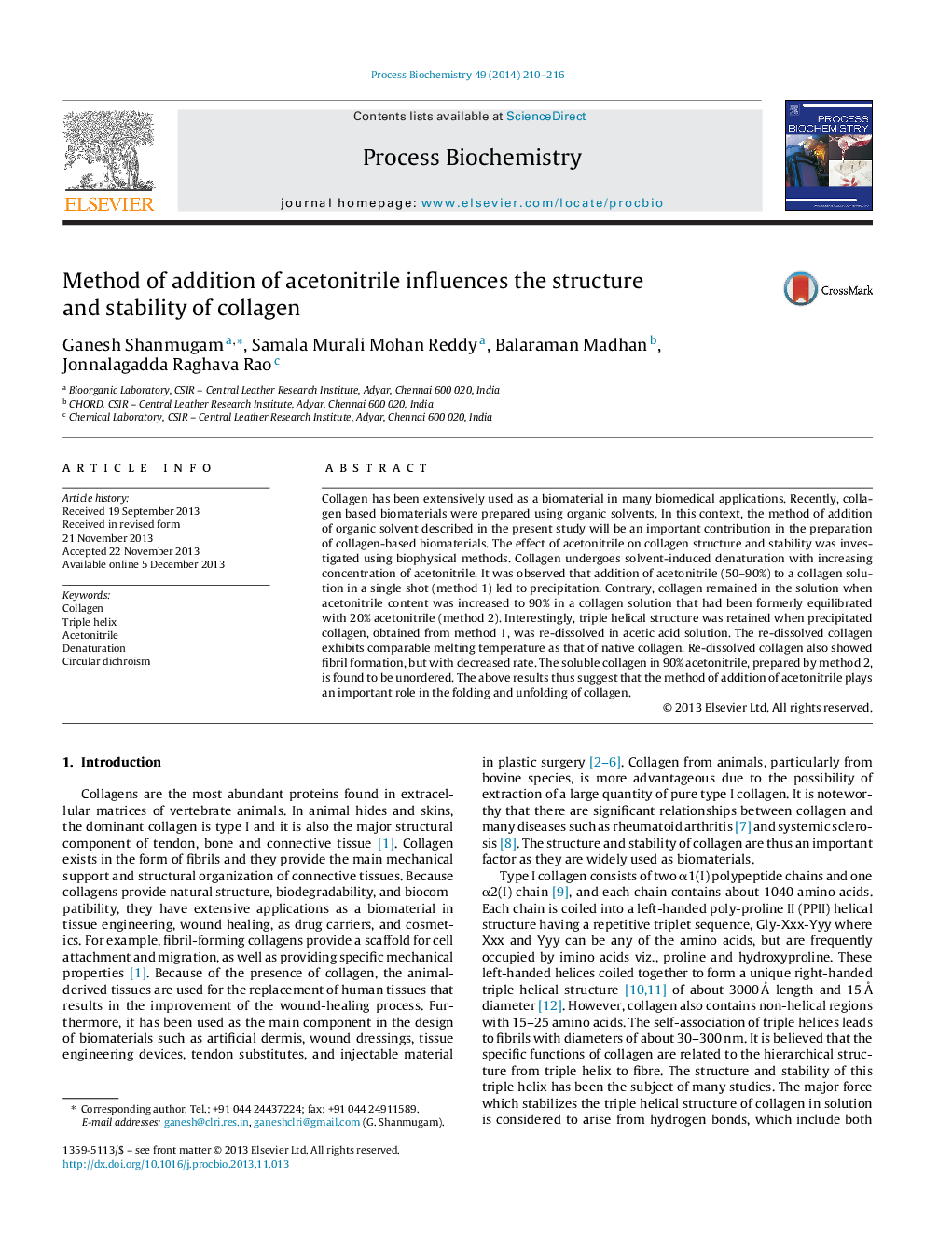| Article ID | Journal | Published Year | Pages | File Type |
|---|---|---|---|---|
| 34784 | Process Biochemistry | 2014 | 7 Pages |
•Method of addition of acetonitrile plays an important role in collagen structure.•Depending upon the method of addition of acetonitrile the collagen can be processed.•Thermal stability and fibril forming property of re-dissolved collagen were retained.•Current finding is useful in the development of collagen-based biomaterial.
Collagen has been extensively used as a biomaterial in many biomedical applications. Recently, collagen based biomaterials were prepared using organic solvents. In this context, the method of addition of organic solvent described in the present study will be an important contribution in the preparation of collagen-based biomaterials. The effect of acetonitrile on collagen structure and stability was investigated using biophysical methods. Collagen undergoes solvent-induced denaturation with increasing concentration of acetonitrile. It was observed that addition of acetonitrile (50–90%) to a collagen solution in a single shot (method 1) led to precipitation. Contrary, collagen remained in the solution when acetonitrile content was increased to 90% in a collagen solution that had been formerly equilibrated with 20% acetonitrile (method 2). Interestingly, triple helical structure was retained when precipitated collagen, obtained from method 1, was re-dissolved in acetic acid solution. The re-dissolved collagen exhibits comparable melting temperature as that of native collagen. Re-dissolved collagen also showed fibril formation, but with decreased rate. The soluble collagen in 90% acetonitrile, prepared by method 2, is found to be unordered. The above results thus suggest that the method of addition of acetonitrile plays an important role in the folding and unfolding of collagen.
